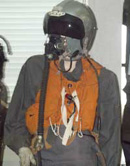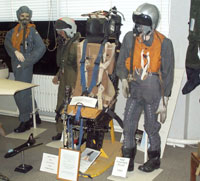 |
WING AIRFIELD |
Martin Baker (11th. September 1893 - January 5th. 1981)
martin Baker was born in County Down, Ireland, and studied engineering at Belfast University. He became an inventor, draughtsman, experimental engineer, toolmaker and fitter assemblyman.


Captain Valentine Baker helped design the MB1 in 1934 and was known as a very good flying instructor. Over the next 8 years a deep and lasting friendship was developed between them. He was born in North Wales and when the war broke out he enlisted as a despatch rider, rising to the rank of Petty Officer. He gave up flying in 1934 and joined his friend James Martin in building a new company, the Martin Baker Aircraft Company Ltd.
The most interesting feature was it's form of construction, being designed to be cheap. It was powered by a 160hp Javelin II engine and flight testing showed no problems. The design was sound but no further development took place after it was destroyed by an accidental fire in 1938.
MB2
This plane was first flown by Captain Baker in August 1938, powered by a Napier Dagger 24 cliynder H-type in line engine.The MB2 was the same basic system as the MB1. The MB2 was purchased by the Air Ministry but tests proved the flying characteristics were less favourable than before. It made it's first flying dislpay in May, 1939, but the project was then was then abandoned the project and time devoted instead to a new fighter.
MB3
Before the end of 1939, there were three prototypes of the Martin Baker fighter and the company went ahead and designed the MB3, having been contacted by the Air Ministry. The engine was a Napier Sabre. It was a smaller and lighter design but more heavily armed with 200 rounds per gun. For the first flight the aircraft was moved to Wing and proved highly manoeuvrable and easy to fly. Martin wanted to use RAF Harwell for flight testing but received orders from the Ministry of Aircraft Production to use Wing in Buckinghire instead. Harwell was surrounded by large open spaces, ideal for forced landings if the need arose, whilst Wing was set in the middle of small fields.
MB5
The Air Ministry was interested in the Martin Baker prototypes and in 1942, came the competion of the third prototype, known as the MB5. Completed in 1944, the MB5 made it's first flight on 23rd May 1944, with Captain Bryan Greensted as the pilot. The MB5 proved to be excellent in both performance and handling but it was required for production in the middle of 1944. It disappeared to the scrap yard although the Martin Baker reputation was enhanced through the development of the ejector seats. In America they are constructing a replica of the MB5 which is being built up from scatch.
Housed in a hanger in Reno Stead Airport, it has a Roll Royce Griffon Dash 58 engine driving two counter-rotating propellers. They hope to fly it in the year 2001.
THE EJECTOR SEAT

After the war Wing was used as a bomb dump. There was talk of using the RAF Huts for housing but today the site has reverted to agricultule although parts of the old runways and some of the buildings still remain.
